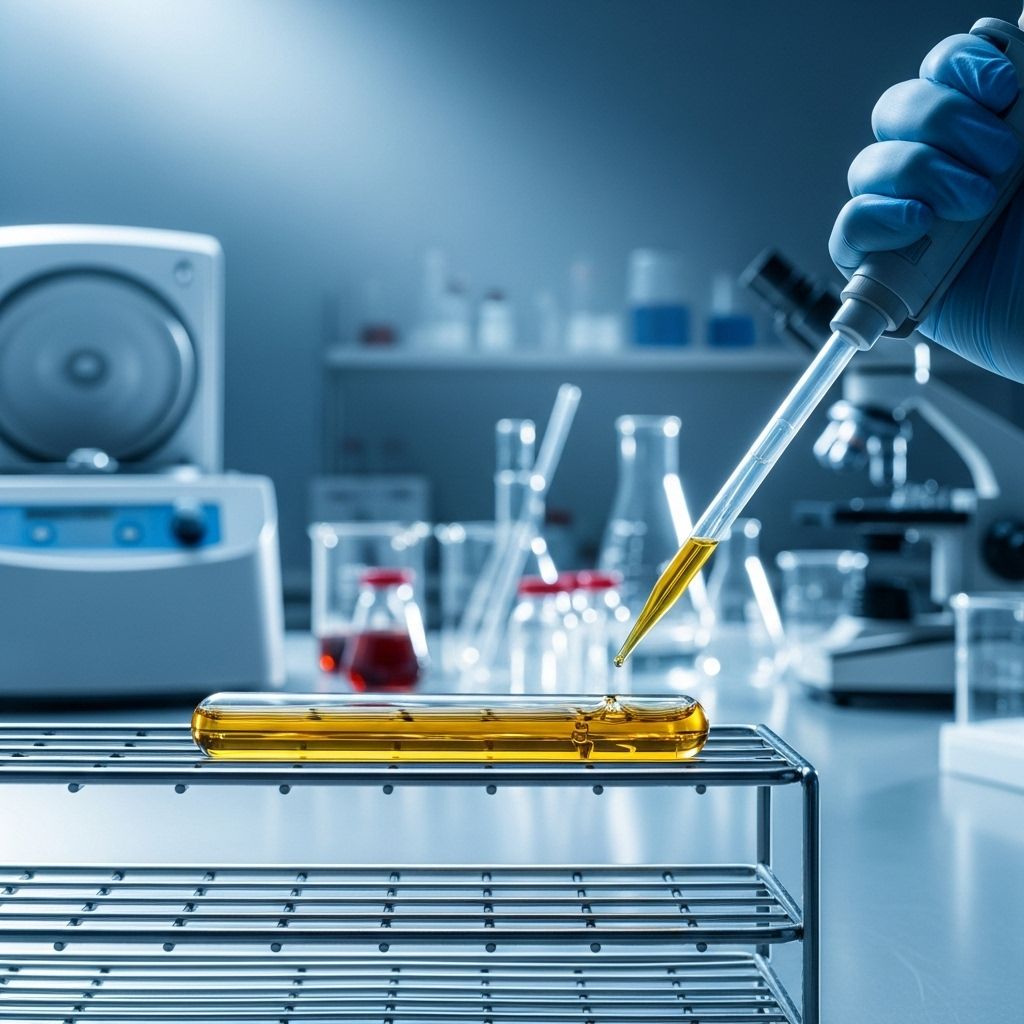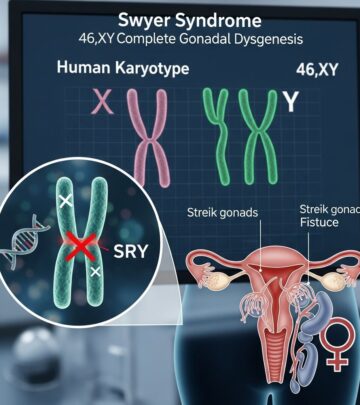Total Protein and Albumin/Globulin (A/G) Ratio Blood Test: Understanding Your Results
A comprehensive guide to total protein, albumin, globulin measurements and the A/G ratio’s significance in diagnosing liver, kidney, and immune conditions.

Total Protein and Albumin/Globulin (A/G) Ratio Blood Test Overview
The total protein and albumin/globulin (A/G) ratio blood test is a diagnostic tool commonly used to assess overall health, detect nutritional status, and screen for disorders related to the liver, kidneys, and immune system. The test measures the concentration of total protein in the blood, with special focus on the two major protein groups: albumin and globulin. It then calculates the A/G ratio, which can provide valuable clues to underlying health conditions.
What is Measured in the Total Protein and A/G Ratio Test?
The blood contains many proteins, but the most important ones for clinical testing include:
- Albumin: The most abundant protein in human blood plasma. Synthesized in the liver, albumin helps transport substances (like hormones, drugs, and nutrients) and maintains fluid balance within blood vessels.
- Globulin: A diverse group of proteins that include antibodies (immunoglobulins), enzymes, and carrier proteins. Globulins are produced by the immune system (in lymph nodes, bone marrow, and spleen), and their concentration increases during inflammation or immune response.
The A/G ratio is the mathematical comparison of albumin to globulin levels. This ratio helps healthcare providers identify patterns suggesting specific diseases, but by itself, it does not point to an exact diagnosis. Additional tests are usually required for further evaluation.
Why is the Total Protein and A/G Ratio Test Done?
This laboratory test may be ordered for several reasons:
- Routine Checkup: Part of general health screening or comprehensive metabolic panel.
- Liver Disease Suspicion: To investigate symptoms of cirrhosis or hepatitis, such as jaundice (yellow skin or eyes), fluid accumulation, fatigue, nausea, itchy skin, weight loss, spider-like veins, and swelling.
- Kidney Disease Evaluation: To check for nephrotic syndrome (protein loss in urine), characterized by swelling around the eyes and extremities.
- Investigation of Unexplained Symptoms: For patients with chronic fatigue, poor appetite, recurrent infections, or abnormal swelling.
- Monitoring Chronic Disease Progression: To monitor conditions that impact protein synthesis or immune activity, such as autoimmune infections, cancers, malnutrition, and inflammatory diseases.
Interpreting Test Results: What Does the Total Protein, Albumin, Globulin, and A/G Ratio Mean?
Healthcare providers interpret protein blood test results using standard ranges and considering the patient’s overall health picture. The typical reference values are:
- Total Protein: Usually between 6.0 and 8.3 g/dL (grams per deciliter).
- Albumin: Around 3.4 to 5.4 g/dL.
- Globulin: Calculated as the difference between total protein and albumin; typical is 2.0 to 3.5 g/dL.
- A/G Ratio: Normally between 1.0 and 2.0, reflecting that albumin levels are slightly higher than globulin.
Abnormal values may point to specific health problems but are rarely diagnostic without further investigation. Both elevated and decreased measurements can be influenced by diet, medications, dehydration, and acute illness.
High Protein, Albumin, or Globulin Values
- High Total Protein: May result from dehydration, chronic inflammation, or some cancers (such as multiple myeloma), but can also occur with a protein-rich diet.
- High Albumin: Most frequently observed in severe dehydration.
- High Globulin: Sign of chronic immune stimulation, such as prolonged infections, autoimmune diseases, liver diseases, and certain cancers.
Low Protein, Albumin, or Globulin Values
- Low Total Protein: Can suggest poor nutrition, liver or kidney disease, or severe digestive disorders affecting protein absorption.
- Low Albumin: Often indicates impaired liver function, kidney disease (protein loss in urine), malnutrition, or inflammation.
- Low Globulin: May indicate immunodeficiency from genetic conditions, or be seen in some forms of leukemia.
A/G Ratio: Clinical Significance
The albumin/globulin ratio provides additional clues:
- Low A/G Ratio: Characterized by decreased albumin and/or increased globulin. May be seen in:
- Liver diseases (cirrhosis, hepatitis)
- Kidney diseases (nephrotic syndrome)
- Chronic infections (e.g., tuberculosis, HIV, hepatitis)
- Autoimmune conditions (rheumatoid arthritis, lupus)
- Certain cancers (multiple myeloma, lymphoma, liver, colorectal, pancreatic, lung cancer)
- Diabetes (low albumin may signal insulin deficiency)
- High A/G Ratio: Usually reflects reduced globulin production. Possible causes include:
- Genetic immunodeficiency
- Some leukemias
- Severe dehydration
- Suppressed immune system (e.g., after chemotherapy)
Because many different conditions can alter the A/G ratio, results require interpretation in context and sometimes follow-up with specialized tests.
How is the Test Performed?
- Preparation: Usually no preparation is needed for routine protein and albumin/globulin ratio tests. Fasting may sometimes be requested.
- Sample Collection: Blood is drawn via a vein in the arm, typically by a phlebotomist or nurse.
- Risks: Minor—typically limited to bruising, dizziness, or rare infection at the puncture site.
- Factors Affecting Results: Dietary protein intake, certain medications (e.g., birth control, estrogen drugs), long tourniquet time, and recent illness or dehydration can influence test results.
Health Conditions Linked to Total Protein and A/G Ratio Abnormalities
| Low A/G Ratio | High A/G Ratio |
|---|---|
|
|
When Should You Contact Your Healthcare Provider?
Contact your healthcare provider if you experience any of the following symptoms, especially if you have abnormal test results:
- Persistent fatigue
- Yellowing of skin or eyes
- Swelling in the abdomen, legs, or around the eyes
- Itching or unexplained rashes
- Chronic loss of appetite, nausea and/or vomiting
- Unexplained weight loss
- Recurring or persistent infections
Discuss any abnormal lab results or symptoms with your healthcare provider, who may recommend further diagnostic testing or refer you to a specialist.
Factors That Influence Protein and A/G Ratio Results
- Diet: High dietary protein can elevate levels.
- Medications: Estrogen, birth control pills, and steroids can lower protein measurements.
- Method of Blood Draw: Prolonged use of the tourniquet may increase albumin concentration.
- Dehydration: Temporarily increases measured protein concentrations.
- Recent Illness: Infection, inflammation, or trauma can alter protein and globulin production.
Inform your provider of medications, supplements, or recent illnesses before testing for accurate interpretation.
Other Names for the Test
- Total Protein Test
- Albumin/Globulin Ratio
- A/G Ratio Test
- Serum Protein Electrophoresis (when subtypes are analyzed)
Preparing for the Blood Test
- No special preparation is usually required.
- Avoid excessive protein intake before the test for representative results.
- Notify your medical care team of any prescription, over-the-counter medications, vitamins, or recent illnesses.
- Fasting might be recommended in specific cases.
Frequently Asked Questions (FAQs)
Q: What is the A/G ratio and why does it matter?
A: The A/G ratio compares blood levels of albumin to globulin. It provides clues about nutritional status, liver, kidney, and immune health but cannot by itself diagnose a specific disease.
Q: What conditions can cause a low A/G ratio?
A: A low A/G ratio may be caused by increased globulin (due to inflammation, autoimmune diseases, infections, or cancers) or decreased albumin (related to liver or kidney disease, malnutrition, or acute illness).
Q: What does a high A/G ratio indicate?
A: High A/G ratio usually reflects compromised globulin production (such as genetic immune disorders or leukemias) or severe dehydration.
Q: How reliable is the test for diagnosing disease?
A: The total protein and A/G ratio test is a broad-screening tool. Abnormal results indicate a possible disturbance but do not specify which disease is responsible. Your healthcare provider will use further testing and medical history to pinpoint the cause.
Q: Are there risks associated with the blood test?
A: Risks are minimal and typical of any blood draw, including mild bruising, pain, or rarely, infection at the puncture site.
Q: Can I eat before the test?
A: Most patients do not need to fast, but follow any specific instructions from your health provider.
Key Takeaways
- The total protein and A/G ratio blood test is a vital screening tool for overall health and detecting disorders of the liver, kidneys, and immune system.
- Normal results vary slightly depending on individual labs, but a typical A/G ratio falls between 1.0 and 2.0.
- Abnormal results may warrant further investigation by a healthcare provider and do not automatically mean a serious disease is present.
- Understanding your test results in context of symptoms and medical history is crucial; always consult your doctor for interpretation and next steps.
References
- https://www.healthline.com/health/a-g-ratio-high
- https://my.clevelandclinic.org/health/diagnostics/22365-globulin-blood-test
- https://healthlibrary.osfhealthcare.org/RelatedItems/167,total_protein_ag_ratio
- https://www.testing.com/tests/total-protein-albumin-globulin-ag-ratio/
- https://www.urmc.rochester.edu/encyclopedia/content?contenttypeid=167&contentid=total_protein_ag_ratio
- https://www.vinmec.com/eng/blog/what-does-the-albumin-globulin-ag-ratio-in-the-test-say-en
- https://testdirectory.questdiagnostics.com/test/test-detail/7577/protein-total-and-albumin?cc=MASTER
Read full bio of medha deb












